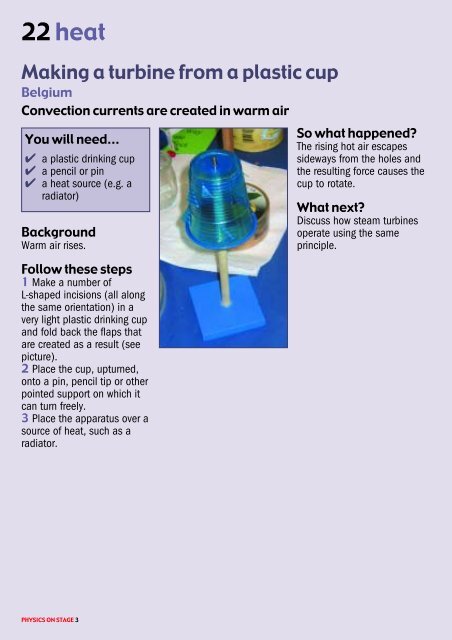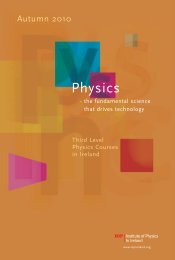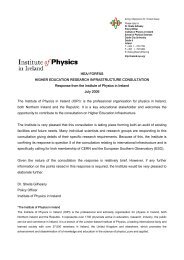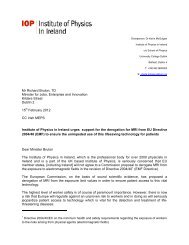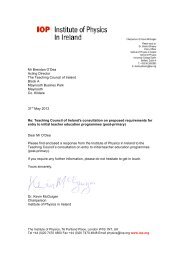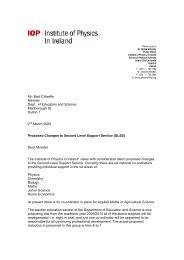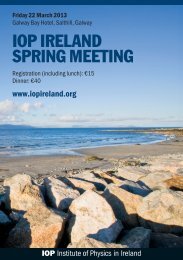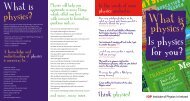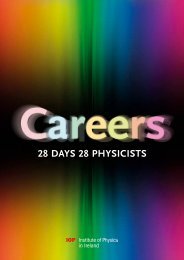PHY ICS - The Institute of Physics in Ireland
PHY ICS - The Institute of Physics in Ireland
PHY ICS - The Institute of Physics in Ireland
You also want an ePaper? Increase the reach of your titles
YUMPU automatically turns print PDFs into web optimized ePapers that Google loves.
22 heat<br />
Mak<strong>in</strong>g a turb<strong>in</strong>e from a plastic cup<br />
Belgium<br />
Convection currents are created <strong>in</strong> warm air<br />
You will need...<br />
✔ a plastic dr<strong>in</strong>k<strong>in</strong>g cup<br />
✔ a pencil or p<strong>in</strong><br />
✔ a heat source (e.g. a<br />
radiator)<br />
Background<br />
Warm air rises.<br />
Follow these steps<br />
1 Make a number <strong>of</strong><br />
L-shaped <strong>in</strong>cisions (all along<br />
the same orientation) <strong>in</strong> a<br />
very light plastic dr<strong>in</strong>k<strong>in</strong>g cup<br />
and fold back the flaps that<br />
are created as a result (see<br />
picture).<br />
2 Place the cup, upturned,<br />
onto a p<strong>in</strong>, pencil tip or other<br />
po<strong>in</strong>ted support on which it<br />
can turn freely.<br />
3 Place the apparatus over a<br />
source <strong>of</strong> heat, such as a<br />
radiator.<br />
<strong>PHY</strong>S<strong>ICS</strong> ON STAGE 3<br />
So what happened?<br />
<strong>The</strong> ris<strong>in</strong>g hot air escapes<br />
sideways from the holes and<br />
the result<strong>in</strong>g force causes the<br />
cup to rotate.<br />
What next?<br />
Discuss how steam turb<strong>in</strong>es<br />
operate us<strong>in</strong>g the same<br />
pr<strong>in</strong>ciple.


